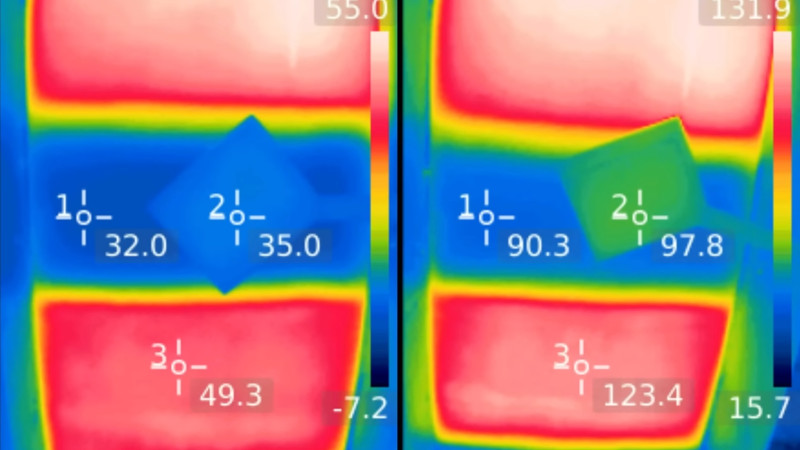
[NightHawkInLight] has been working on radiative sky paint. That’s a coating that radiates heat in the infrared spectrum at a wavelength that isn’t readily absorbed or reflected by the atmosphere. The result is a passive system that keeps materials a few degrees cooler in direct sunlight than an untreated piece in the shade. That sounds a bit like magic, but apparently the math checks out. Come back after the break for more details, and the video demonstrating how to make this super-material.
This isn’t the first time he’s demonstrated infrared cooling, but the previous demonstration used Barium Sulfate microspheres. The process of making those microspheres is a bit beyond the reach of the average garage tinkerer, so [NightHawk] has spent the last year working on a DIY-friendly recipe. And it looks like it’s a success, as the recipe is baking soda, de-icer, and citric acid, all combined in a blender. The result is microsphere crystals of calcium carbonate, but that was only half the battle. To really get effective cooling, the resulting paint needs a very high density of spheres. The trick here is to manage the size of the crystals, mixing large, medium, and super-tiny spheres to achieve maximum density. With the recipe given, the secret is nucleation sites. The more crystals start growing at once, the sooner the solution is sapped of suspended calcium carbonate, and the smaller the resulting crystals. Put simply, blend longer for smaller crystals.
So the procedure is to make three batches of microspheres, of the three different sizes, and then mix the dried powder in the ideal ratios for maximum density. This powder has to be suspended in something to make a paint, and the current recipe is an acrylic with suspended water particles. Mix water, acetone, and bits of Plexiglas. When the acetone evaporates off, the water is left trapped in the acrylic, making a bright, reflective coating. Mixed with the calcium carbonate, it’s both reflective and emissive on that magic IR frequency that passes right through the atmosphere. The only problem is that calling the result a paint is being a bit generous. It ends up about the consistency of cake icing, and [NightHawk] had some success applying the mixture with an oversized piping bag. There’s more to come, including instructions for turning the mixture into self-contained cooling panels, for a power-free air conditioning solution. Stay tuned!
Cooling Paint You Can Actually Make
Source: Manila Flash Report
0 Comments